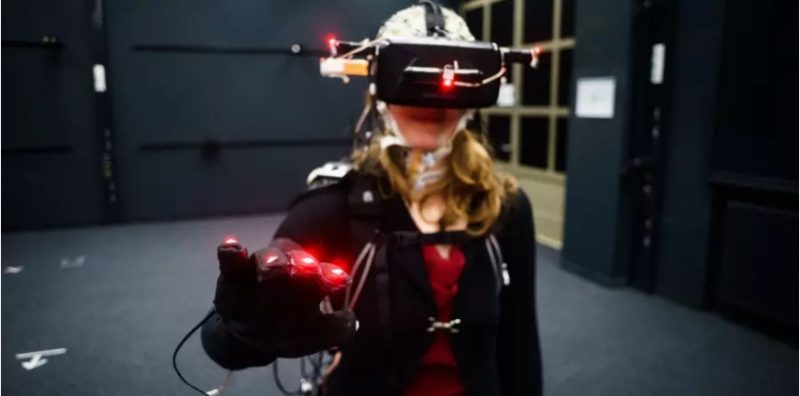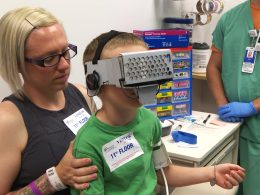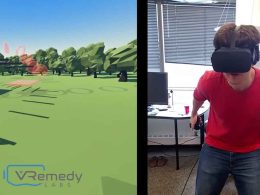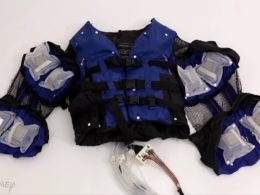What actually happens in our brain when we move? We know very little about this. Now researchers have found a new way to measure our brain activity when we are in action. This could help in the development of better prostheses. A new laboratory in Berlin is also using virtual reality.
The scientists have been working for almost five years to develop the laboratory for Mobile Brain/Body Imaging - which translates as Laboratory for Mobile Imaging of Brain Dynamic Activity - at the TU Berlin. "This laboratory is one of the few in the world that investigates this type of spatial cognition," says Ole Traupe.
Catching green balls in the service of science
The lab's equipment also includes a VR station. In the VR experiment, the user stands in a room in which red and green balls fly towards them. The green balls should be touched with the index finger, the red ones not. In contrast to conventional VR games, this is not just fun. It also has a deeper meaning. Sensors on the head measure the brain waves during the game, i.e. the activity of the approximately 86 billion nerve cells of the test subjects. "We want to find out what generally happens when the test subject adapts to a dynamic situation," says Klug. "We can measure where the test subject looks, how they move and, of course, the brain waves."
To do this, the measurement of electrical activity in the brain is linked to various sensors such as eye-tracking systems and movement measurements and synchronised online. The scientists want to analyse all of these measurements in context with each other.
Klaus Gramann, who has been researching brain activity during movement for ten years, devised this examination method together with colleagues in the USA. He wanted to close a gap with the new laboratory. This is because current neuroscientific methods only allow limited movement or take place at rest, i.e. without any movement at all. Imaging examination methods such as MRI have become indispensable. However, they do not provide any information about what happens in the brain during movement. "We don't even know that yet because we have never systematically investigated it," says Gramann. "If you lie in a scanner or sit in a laboratory and don't move, then the information that is a natural part of perception and information processing in life is missing."
The goal: smarter prostheses
Investigating brain activity during movement is not only important for gaining a better understanding of the brain, but also for developing new applications for artificial intelligence. Gramann hopes to gain insights for very specific medical applications and devices. For example, for prostheses that could act more adaptably and intelligently with more information about the user.
Among other things, the measurements are intended to show what exactly happens in the brain when we start walking from a standstill. This information will then be passed on to the prosthesis. The prosthesis should be able to read thoughts, at least a little.
Findings for movement restrictions
The examinations could also provide important findings in cases of restricted movement, for example after a stroke or with Parkinson's disease. Here too, fundamental questions need to be clarified first: How is the muscular system controlled in a diseased body? And what happens on a brain-dynamic level when such test subjects move?
"Initial findings indicate that the human brain processes information differently in motion than at rest," says Gramann. The psychologist assumes that a planned action or movement has an influence on how we perceive the environment, that neuronal activity is changed and optimised for the movement goal. Our brain achieves peak performance in this process. It often involves processes of milliseconds in which the brain has to analyse and react to external influences. As in the virtual reality experiment.
Source: Wired / Youtube









